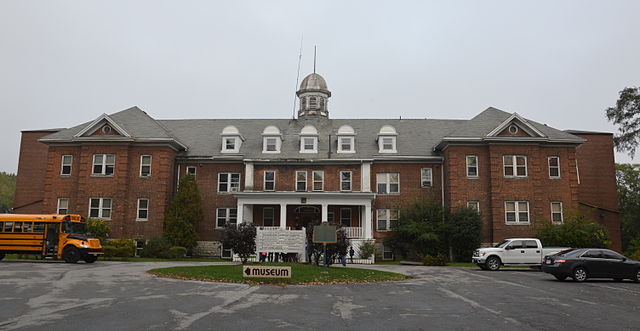By Rebecca Gruszka, Local Journalism Initiative Reporter
Metrolinx is taking action to make travel easier for people who are neurodivergent or have invisible disabilities, via the recently-released MagnusCards step-by-step travel guides and the adoption of the Hidden Disabilities Sunflower pins. The Hidden Disabilities Sunflower pins, lanyards, and wristbands are already used at airports and other travel hubs across the world for people to signal that they may require a helping hand, a bit of extra time to board and disembark from trains, planes, or buses — or simply some understanding and patience; Metrolinx began offering complimentary sunflower pins to customers late last year.
Invisible, or hidden, disabilities are exactly what they sound like: disabilities that one cannot identify by looking at a person. While it is clear that someone who uses a wheelchair has some kind of difference in or difficulty with mobility, it may not be immediately apparent that someone experiences, for example, fatigue, chronic pain, dizziness, a brain injury or cognitive challenges.
Neurodivergence is a term for people whose brain functions differently from what is considered “typical,” and includes learning disabilities, medical disorders, and other conditions; some examples are autism, ADHD, and dyslexia. People who are neurodivergent have different strengths and challenges than neurotypical people.
Sometimes those challenges can include understanding how to get through busy GO train stations. In response, Metrolinx has partnered with MagnusCards to offer step-by-step guides to help neurodivergent people navigate Presto, UP Express, and the GO transit network via the MagnusCards app (free in the Google Play Store or Apple App Store). The app has guides on how to obtain and use a Presto card, how to buy tickets and check schedules, and how to plan a trip.
MagnusCards provides free digital how-to reference guides on their app to foster inclusive and independent living among users. Their card decks, which include visual cues as well as text- and audio-based instructions, are co-created autistic advisers and by the different businesses, brands, and venues MagnusCards calls “inclusion partners”; their input is used to ensure the guides are as inclusive as possible, lowering the barriers to participating in community life.
MagnusCards boasts more than 55 inclusion partners across North America and has reached more than 8 million people with its inclusion awareness campaigns.
MagnusCards is also partnered with Burlington Transit and Pearson airport, making your trips easier and more accessible.
Outside of travel, MagnusCards offers guides to help in social situations, healthcare (guides for getting a blood test or eye exam, for example), how to order food at a restaurant, how to cook (by offering easy recipes), as well as guides on money management and personal care.
People living with invisible disabilities may also benefit from some of MagnusCards’ offerings, but likely also have additional challenges, which are often physical. Because their disabilities are not visually obvious, people with invisible disabilities often report that bystanders may chastise them for using a disabled parking spot, or for taking accessible seating on public transit. However, they need the same care and understanding as people with visible disabilities.
Hearing “You don’t look sick,” or “You’re too young to be sick” as the youngest person in a specialist’s waiting room can make one weary. A young person waiting for the elevator because of joint pain brought on by medication and who is fighting fatigue every day should have the same judgment-free ride as someone in a wheelchair. A 70-year-old deaf or hard-of-hearing person should be able to access services with respect; if they ask for sentences to be repeated multiple times, it would make their day much easier to have their requests met with patience. The truth is, we usually do not know what another person is experiencing if no visible signals are present.
Hidden Disabilities Sunflower (HDS) has created a subtle way for individuals to voluntarily identify as needing extra help, understanding, or more time to do things. HDS aims to help people with non-visible disabilities through raising awareness, training businesses, and sharing stories to foster a more inclusive and understanding society. As of October 27, 2023, Metrolinx joined the HDS program, so that passengers can self-identify easily as someone with an invisible disability.
Hidden Disabilities Sunflower pins can be picked up at Toronto’s Union Station (just ask a GO Transit or UP Express employee) or can be mailed to your home upon request by emailing accessibility@metrolinx.com.
Toronto Pearson airport is also an HDS adopter and was the first airport in Canada to welcome the use of the sunflower for passengers. Passengers can pick up a sunflower lanyard at the information desks in Terminal 1 and 3, Lost and Found in Terminal 1, or can request one by mail 14 days before travel, Pearson shares. There is also a phone line and tablet at the information desks to contact an agent to bring a lanyard if no one is at the information desk.
Pearson is not the only airport in Canada to use the sunflower. Travelers can request sunflower lanyards in Calgary, Edmonton International, Greater Moncton International, Hamilton International, Kamloops, Regina International, Vancouver International and Winnipeg Richardson International airports; and soon at Ottawa International.
Since its launch in 2016 at Gatwick Airport in England, the sunflower lanyards and pins have been used in over 30 countries, including Canada, the U.S.A., Australia, and New Zealand, in businesses like travel and tourism, transportation, educational institutions, and healthcare. With a heavy focus on travel accessibility, the sunflower can be found in 230 airports around the world and is adding more all the time — most recently in the Isle of Man and Delhi airports.
Why a sunflower? It’s visible from a distance and is a distinctive symbol. It also, according to HDS, suggests happiness, positivity, strength, growth, and confidence.
The HDS website also offers information on invisible disabilities, and the ability to share personal stories and to hear the experiences of other sunflower-wearers through their podcast, the Sunflower Conversations.
Their A–Z list invisible disabilities index contains brief overviews of each condition listed, alongside facts, possible symptoms, and, for some conditions, how you might support someone with that disability. Interestingly, “Peri/menopause” is included in HDS’ hidden disabilities section, and recently, the Sunflower Conversations featured 32-year-old stroke survivor Hayette Wilkinson’s journey post-stroke. You can listen here to hear the impact of the stroke on her cognitive and physical ability, her work, her relationships, and her ability to get back to work.




